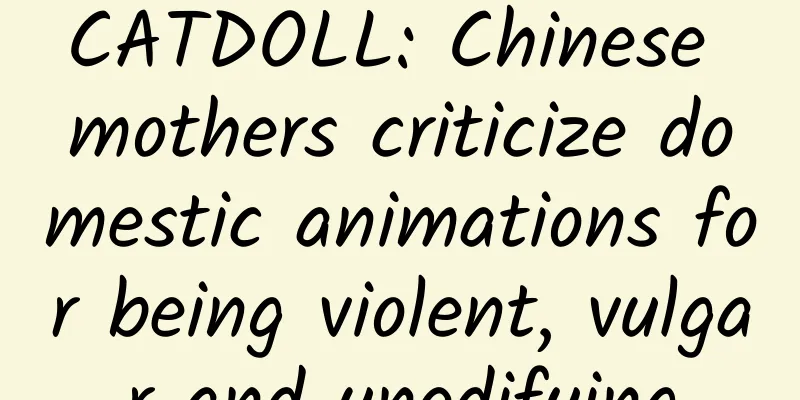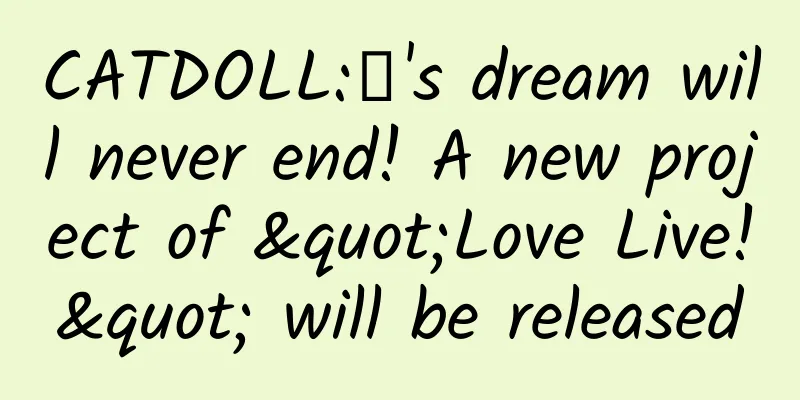CATDOLL: Chinese mothers criticize domestic animations for being violent, vulgar and unedifying

|
A large part of domestic animations are for young children, but now more and more domestic animations for young children have more and more violent scenes and vulgar language, which makes parents of children very worried. A mother recently criticized the cartoons "Pleasant Goat and Big Big Wolf" and "Boonie Bears" on the Internet, and summarized their "three sins". Many mothers liked it and expressed their deep agreement. The "three sins" summarized by this mother are: Promote violence The "wolves" and "bears" in these two cartoons have many kinds of "violent" behaviors: hitting, ramming, drowning, roasting, electrocuting, shooting, hanging with ropes, and running over by cars... Although sometimes they put up a warning that "animation plot, please do not imitate", for young children who have no ability to distinguish or even recognize words, isn't imitation their most basic ability? What's more, I am even more puzzled: since you clearly know that these plots are not suitable for children to imitate and are unhealthy, why did you design them? Proclaiming the immortality of life These two cartoons present all kinds of "violent" methods, but the strange thing is that every kind of violence looks "terrifying", but the protagonists "will not die". The wolves fell heavily from the sky and screamed "Ah", but they did not die; the bears were shot by shotguns, and the bullets whizzed past, but they did not die; Bald Qiang experienced countless "inhumane" "tortures": he was electrocuted and screamed "Ah" and "Ah", his head was flattened by falling objects from high altitude, and he was thrown heavily from a car and crushed, but no matter how he screamed "Wow Wow", the result was always "Not Dead"... For children, this is a terrible education: from then on, how can children know the fragility of life? How can they know the preciousness of life? How can they know how to protect themselves and others' lives? Promoting "vulgar" social concepts If you look at the plot of "Fruit Robo", and see the "Fruit Robos" being beaten to the point of "fruit pulp all over the ground" and blood dripping, you will know that the violence in the police and gangster movies is not really violence. If you listen to the "lines" of the "Fruit Robos", you will know what is vulgar, what is shameless, and what is socialization! I don't understand why the plot of the cartoon must be so "violent" and the language must be so "vulgar"? I don't understand, don't the people who make cartoons understand what is true, good, and beautiful, and what is false, evil, and ugly? The mother also angrily said: It is still very difficult to learn politeness, harmony, friendship and traditional Chinese virtues from domestic animation. In fact, many parents feel the same way, and even many parents have begun to forbid their children to watch such animation. This behavior is also a helpless act. Psychological experts believe that adults can see the value and meaning in animation, while children learn role-playing from animation. They will absorb both good and bad things, so there will be unexpected consequences. In fact, Chinese producers of animation for children should really pay attention to this issue. China's animation market does not have a rating system yet. If everyone does not pay attention to the possible consequences of these animations on children, then it is really hard to say whether parents will ban these domestic animations in the future. Professor of Academy of Fine Arts: Domestic animation lacks maturity, and humor is misunderstood Why do the most popular cartoons among children also have violent and vulgar plots and dialogues? Yu Jin, associate professor of the School of Media Animation at the China Academy of Art, who just won the Golden Monkey Award at the 2015 China Animation Festival, analyzed: First, it is a social problem, a misunderstanding of humor. Now many people regard vulgarity as humor. The screenwriters have a vague positioning of the cartoons themselves. In order to cater to the public taste and increase box office ratings, they have written these plots; second, there are too many episodes in domestic cartoon series, and the stories themselves do not have that much content. In order to save time, the screenwriters can only make a fuss about violent and vulgar plots; third, there is no classification for domestic cartoons, and screenwriters generally do not consult psychological experts in advance, or cooperate with children's literature writers, so the story content may not meet the psychological characteristics of children. Early childhood educators: Animation should guide children to explore the world So, what characteristics should a good cartoon have? Qianbao reporters asked several teachers who have been engaged in early childhood education for many years. Hu Yan, the principal of Hangzhou Tianshui Kindergarten, believes that a good cartoon should have beautiful pictures, which can bring a sunny mood to children and help them learn aesthetics. It is best if the story contains humanistic care, telling children the value of friendship and to be tolerant and considerate when interacting with peers. Today's parents and teachers lack a sense of humor, so she also hopes that the language and plot of cartoons will be more interesting, which can bring a sense of humor to children, so that they can adjust themselves when encountering difficulties and occasionally laugh at themselves. Less violence and more microscopic world can guide children to explore the world. For example, after watching the cartoon, the children will run to see what the ant family under the leaves is doing. Chen Yun, the principal of Hangzhou Taoyuan Kindergarten, hopes that through cartoons, children will resonate with emotions, arouse a sense of justice, and experience truth, goodness, and beauty. Because many animated films are now adapted from famous works, it is hoped that cartoons can help children better understand classic works, arouse children's interest in classic works, and plant the seeds of love for literature in their hearts from an early age. It is best to imply some scientific parenting methods, such as "Big Head Son and Small Head Father". The stories are based on children's lives and are based on children's age characteristics and psychological development characteristics. If parents watch them with their children, they can also be inspired. |
<<: CATDOLL: The author of "Hell Girl" adapted the famous school manga "Cold Salt Field"
>>: CATDOLL: New images of the key new characters of "Digimon Adventure tri." revealed
Recommend
CATDOLL: The trailer for the second season of "Attack on Titan" revealed that the city wall is actually a "giant"!
Previously, the popular animation "Attack on...
CATDOLL: The main cast of the Japanese drama "Angel Heart" is revealed: Kamikawa Takashi will play Saeba Ryo
The parallel world work "Angel Heart" o...
CATDOLL: "Attack on Titan: LOST GIRLS" spin-off novel is adapted into a comic
The novel "Lost Girls", a spin-off of &...
CATDOLL: Voice actress Mikako Komatsu reveals that she is bombarded with messages from fans on LINE
Voice actress Mikako Komatsu suddenly revealed he...
CATDOLL: The original work of "Million Doll" will be suspended indefinitely. The author said that he was exhausted physically and mentally.
Since its premiere in July, the idol-themed TV an...
CATDOLL: The second CM of the Japanese drama "Prison School" released that Guan Erye is trapped in a mysterious ravine
Recently, the second CM of the Japanese drama &qu...
CATDOLL: "Nisekoi" Season 2 Episode 12 Picture Preview!
This work is a love comedy that initially revolve...
CATDOLL: Top 10 "Detective Conan" Popularity Voting: Little girls are the best
Detective Conan has been serialized for 21 years,...
CATDOLL: The movie version of "Dragon Ball Z: Resurrection F" released plot pictures are almost all battles
The theatrical version of "Dragon Ball Z: Re...
CATDOLL: Nisio Isin's "End Story" will be adapted into a TV animation and aired in October
The Monogatari series work "End of Monogatar...
CATDOLL: The animated film "Lock Kingdom 4: Departure! Valley of the Giants" is scheduled to be released on August 13th and the first poster is exposed
The animated film "Lock Kingdom 4: Let's...
CATDOLL: "Minions" will be released in China on September 13th. It's super cute and has no bottom line.
Super cute little yellow people are coming to Chi...
CATDOLL: The next guest of the popular game show "Tokyo Encounter 2" by Sugita Tomokazu and Nakamura Yuichi will be the long-lost female guest Sumire Uesaka!
The game show "Tokyo Encounter II" (東京エ...
CATDOLL: Voice actress Nitta Emi is recuperating due to vocal cord nodules
Emi Nitta, the voice actor of Honoka Kousaka in &...
CATDOLL: Characters of the animation "Online Game Wife Can't Be a Girl?" revealed
The TV animation adapted from the light novel &qu...









